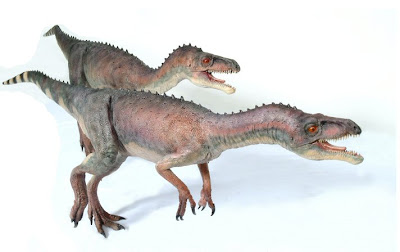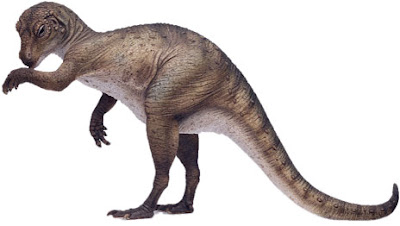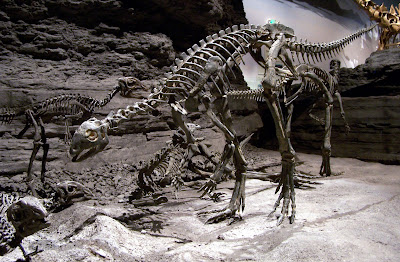
The Eoraptor lunensis, a medium-sized carnivore found in the Ischigualasto Formation of northwestern Argentina. The find occurs alongside other early dinosaurs and their kin, such as Herrerasaurus and Pisanosaurus.
Eoraptor lacks the specialized features of any of the major groups of dinosaurs, and is quite similar to what would be expected for dinosaur ancestors. This has led some to conclude that it is not part of the dinosaurs proper, but is a closely related archosaur. Others have pointed to the functionally three-fingered hand as an indication of close ties to theropod dinosaurs.
In any case, the traits of Eoraptor suggest that the first dinosaurs were small, bipedal predators. Taken together, the finds at Ischigualasto demonstrate that dinosaurs had radiated by the Late Triassic.
Eoraptor lunensis is roughly the same age as Herrerasaurus - 232 million years old - yet it already shows specialized features which indicate that it lies several branches up from the base of the dinosaurian family tree.
The exact nature of these features suggest that Eoraptor lies at the base of the great Theropoda lineage - the theropod dinosaurs - which includes many celebrity species, such as Tyrannosaurus rex, Allosaurus, Deinonychus, and Velociraptor. .
The upper Triassic Eoraptor is one of the earliest dinosaurs, close to the common dinosaur ancestor. Sereno considers it a primitive theropod, although others consider it a primitive dinosaur or pre-dinosaur.
Attractive features
Foundation- Patagonia, Argentina, South America
Analysis- It had light, hollow bones, a long head with dozens of small, sharp teeth, and five fingers on its hands (two of the fingers on each hand were very small)
Length-1 meter
Height and weight – mass
Locomotion-Bipedal
Food-carnivore
Time period-228 million years
Dinosaur group-Theropod
 Our current thinking is that dinosaurs passed away due to the following sequence of events:
Our current thinking is that dinosaurs passed away due to the following sequence of events:

































 ronment similar to some of the large plains of Africa today (Russell, 1989).
ronment similar to some of the large plains of Africa today (Russell, 1989).




